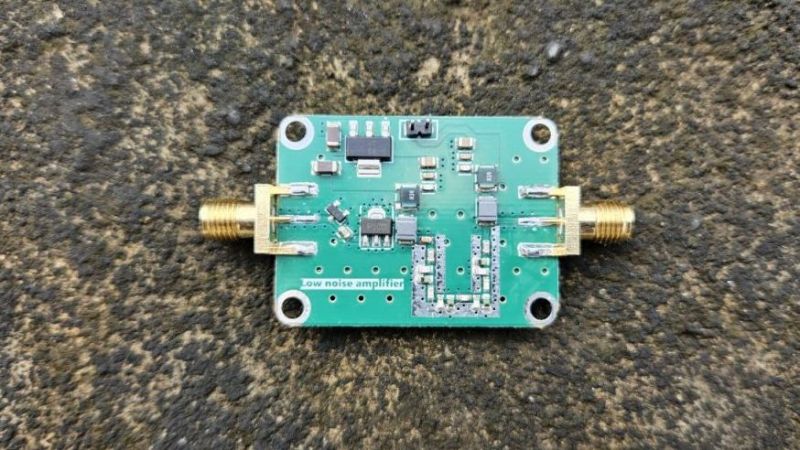If you’re planning on working satellites or doing any sort of RF work where the signal lives down in the dirt, you’re going to need a low-noise amplifier. That’s typically not a problem, as the market is littered with dozens of cheap options that can be delivered in a day or two — you just pay your money and get to work. But is there a case to be made for rolling your own LNA?
[Salil, aka Nuclearrambo] thinks so, and he did a nice job showing us how it’s done. The first step, as always, is to define your specs, which for [Salil] were pretty modest: a low noise figure, moderate gain, and good linearity. He also wanted a bandpass filter for the 2-meter amateur radio band and for weather satellite downlinks, and a bias-tee to power the LNA over the coax feedline. The blog post has a detailed discussion of the electrical design, plus some good tips on PCB design for RF applications. We also found the discussion on bias-tee design helpful, especially for anyone who has ever struggled with the idea that RF and DC can get along together on a single piece of coax. Part 2 concentrates on testing the LNA, mostly using hobbyist-grade test gear like the NanoVNA and tiny SA spectrum analyzer. [Salil]’s tests showed the LNA lived up to the design specs and more, making it more than ready to put to work with an RTL-SDR.
Was this more work than buying an LNA? Absolutely, and probably with the same results. But then again, what’s to learn by just getting a pre-built module in the mail?
















Be careful joining ground pours across filter elements(for some it can be done with no ill effects). It can cause signals to leak along the ground pour before reaching the ground plane through the vias.
Wringing out as much gain as you can helps. Using ultra high Q porcelain caps from companies like ATC or Johanson will help reduce losses. Some air core inductors will do the same.
Thanks for the tip. I just picked up whatever was available on JLC for assembly. Better components would definitely improve the performance.
This was a good project write-up. I wonder if they could do well to sell sets of just the bias-tees as power injectors, since others might have different requirements, as they are in the business of selling units anyway.
Do the protection diodes degrade the OIP3?
It does affect very slightly. But without the diode, its very easy to destroy the amplifier.
dead link
Which one?